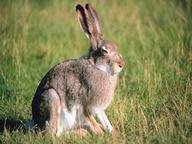Quiz Answer Key and Fun Facts
1. Where are you most likely to see a black-tailed jackrabbit in the wild?
2. Which of the following options makes up most of the Mongolian pika's diet?
3. You can always tell when you are looking at an Arctic hare because of its snow white fur.
4. What is the proper name for a baby hare?
5. Which of the following lagomorphs is often considered to be the most genetically modified member of the species?
6. All but two of the known species of pika make their homes in which continent?
7. In which of the following countries do they venerate the rabbit as living on the moon and helping to make the elixir of life?
8. Why are there so many Angora rabbit farms around the world?
9. Rabbits, hares, and pikas are part of the rodent family.
10. As cute as some of us might think lagomorphs are, they can actually be major pests. Which of these countries built a 'rabbit-proof fence" in 1907 that was over 2,023 miles (3,256 km) long?
Source: Author
dcpddc478
This quiz was reviewed by FunTrivia editor
Tizzabelle before going online.
Any errors found in FunTrivia content are routinely corrected through our feedback system.

